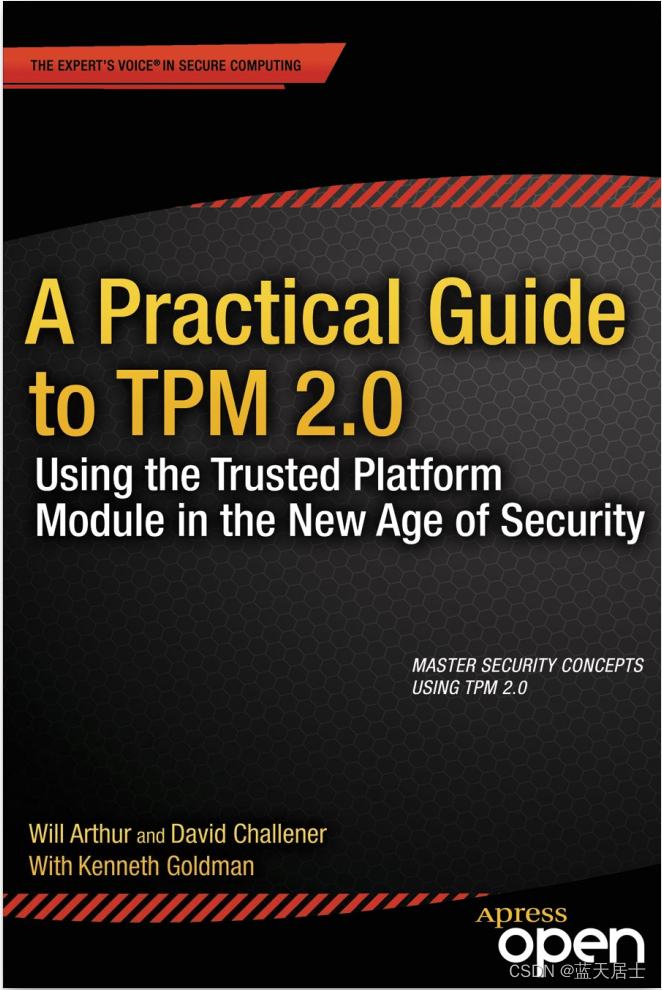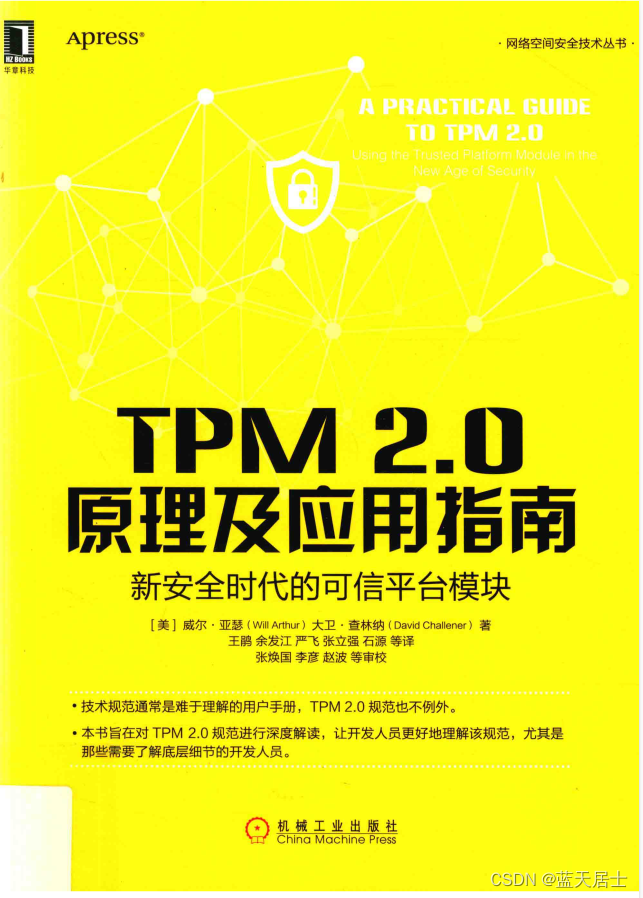前边的“TPM零知识学习”系列文章主要从实际平台移植和TPM环境搭建的角度讲解了TPM,现在到了踏实下来学习理论知识的时候了。从本篇文章开始,开启TPM2.0原理及应用学习之旅。参考书目为:《A Practical Guide to TPM 2.0 — Using the Trusted Plaform Module in the New Age of Security》,封面如下:

与之相对应的中文译注为《TPM 2.0原理及应用指南》,封面如下:

笔者曾经尝试上传这本书的pdf版(前一本英文版书的pdf优快云上已有下载资源),但很遗憾由于版权问题没有通过。那么,我只能在从本篇文章开始及以后的各篇系列文章中,使用中英文对照的方式记录中英文书中的各章内容,其中中文翻译笔者并不完全照搬译著中的翻译,而是会结合自己实际的理解进行翻译,这样使读者能够看一篇文章等同于同时学习到两本书。并且,对于各章内容笔者还会加入自己的理解和标注,希望能够做一个比较全面、有价值的学习专栏。
本篇文章为前言部分内容。
Introduction —— 介绍
“Seminal!”
“R








 本文是《TPM 2.0原理及应用指南》的前言,作者将结合中英文对照的方式,深入解读TPM2.0,帮助读者理解这一数字安全的重要组成部分。尽管数字安全可能不像小说般引人入胜,但在网络安全日益重要的今天,了解TPM2.0至关重要。本书适合IT管理者、安全架构师、系统程序员、应用开发者等不同层次的读者,旨在激发大家对TPM2.0技术的兴趣并付诸实践。
本文是《TPM 2.0原理及应用指南》的前言,作者将结合中英文对照的方式,深入解读TPM2.0,帮助读者理解这一数字安全的重要组成部分。尽管数字安全可能不像小说般引人入胜,但在网络安全日益重要的今天,了解TPM2.0至关重要。本书适合IT管理者、安全架构师、系统程序员、应用开发者等不同层次的读者,旨在激发大家对TPM2.0技术的兴趣并付诸实践。

 订阅专栏 解锁全文
订阅专栏 解锁全文


















 796
796

 被折叠的 条评论
为什么被折叠?
被折叠的 条评论
为什么被折叠?










